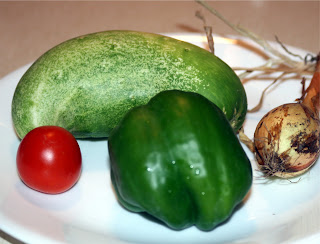January is approaching and as the cold
of the winter months begins in earnest, I find this period of time is
a great opportunity to sit down in my easy chair and make my plans
for what I'd like to do in 2012. Like many plans we make, sometimes
it's best to look backwards before moving forwards.
In this case, I wanted to review some
of the challenges I faced in the spring and summer of 2011 to help me
make some changes that might improve my harvests. Last year was not
all I had hoped it would be as one crop after another failed for
various reasons. Following is a list of some of them:
Too much moisture early on in the
spring!
As a warmer than normal spring
progressed in southwest Missouri in 2011, I had made a great start on
plants like romaine lettuce, radishes and carrots. They had sprouted
and, though still small, were looking good. Suddenly, towards the end
of April, the rains came and came and came. All told, a narrow band
of real estate from about the Arkansas border north, up to Ozark, got
upwards of thirty inches of rain when fifteen would have been more
the norm for the three month period Mar-May. That much rain, in such
a short period of time really set back the plants that didn't
outright drown!
It got hot hot hot!
After the flood, came the heat of
summer which was also way above normal. The month's of June through
August averaged over four degrees above normal with many days topping
the hundred degree mark. All that heat when combined with average
moisture helped to create a bumper crop of hungry bugs!
When bugs attack!
2011 saw three waves of bugs in my
garden area and that's not counting the locusts that made hearing
difficult! The first wave occurred in June with the appearance of the
Japanese beetle, a bug with an appetite for just about every veggie
and flower. Then came the cucumber beetles followed swiftly by the
squash bugs that finished off whatever crops the other bugs had
missed.
By mid July, I had retreated into air
conditioned comfort and contented myself with watching the carnage
through a window that over-looked the back yard. Outside I could just
make out the audible crunching sounds of thousands of insects who were busy
reducing my plants to stems and twigs.
After a bad year like that, I plan to
make some changes in the 2012 garden that will be posted later in
January. Happy gardening!















































